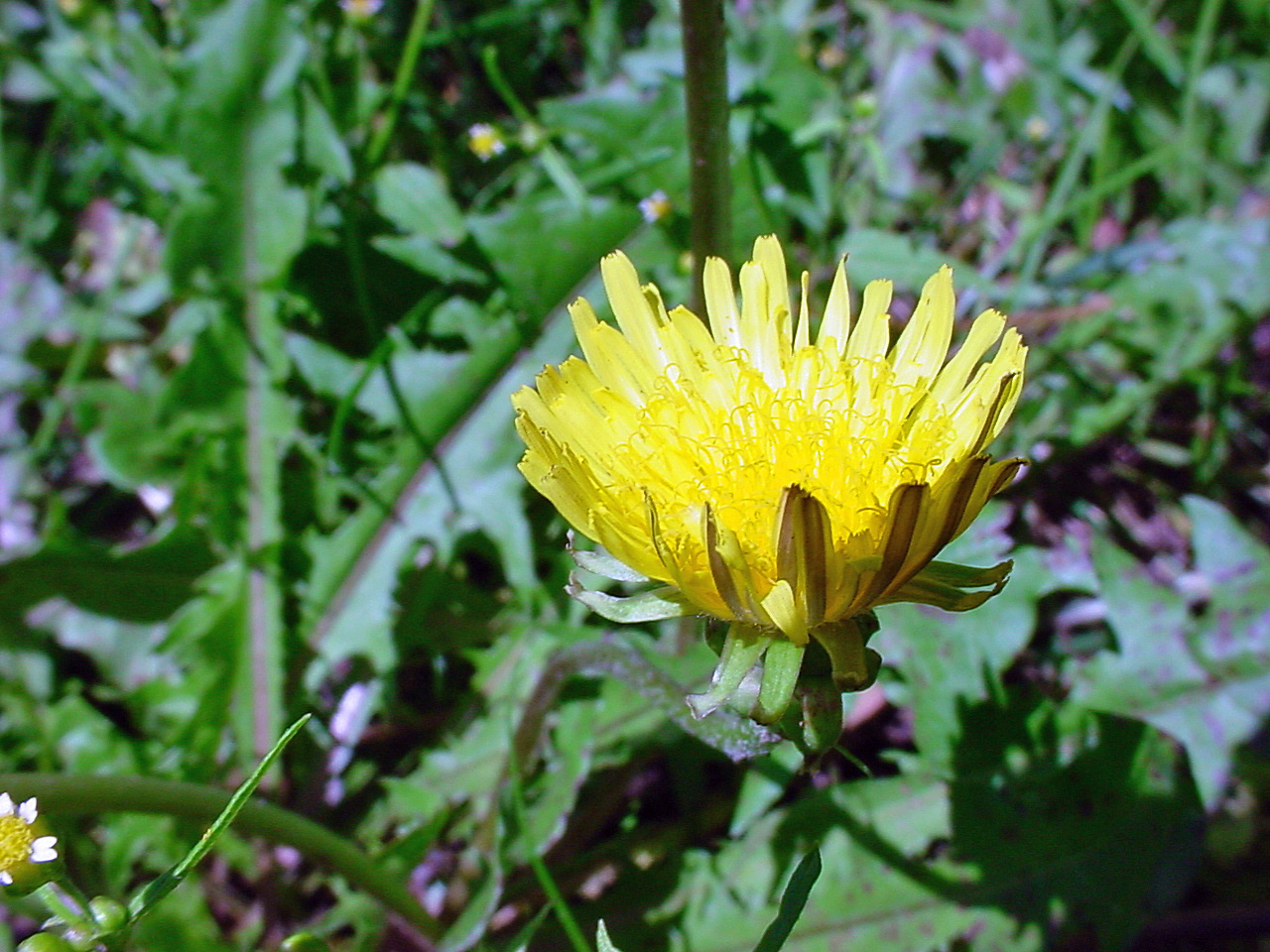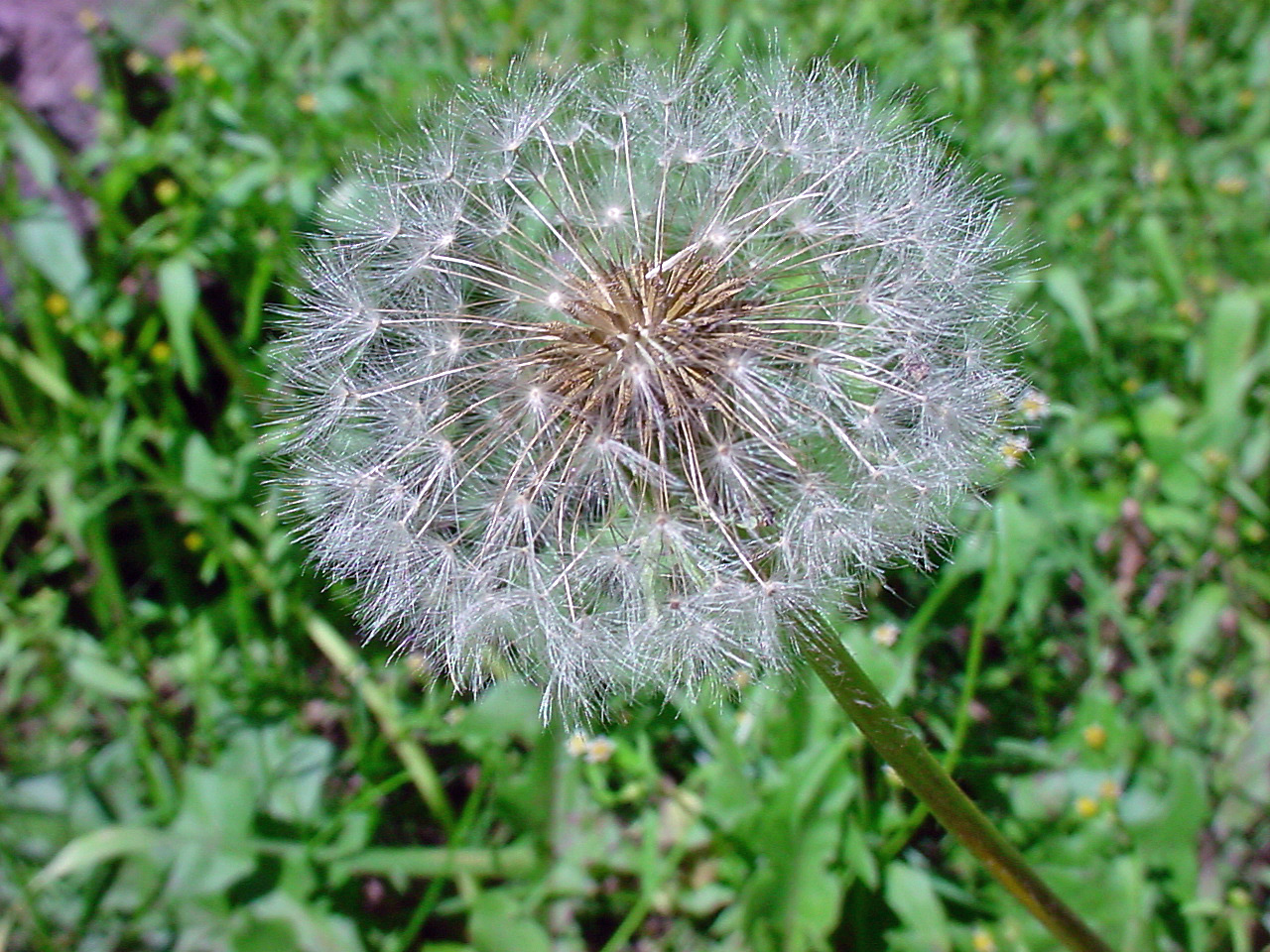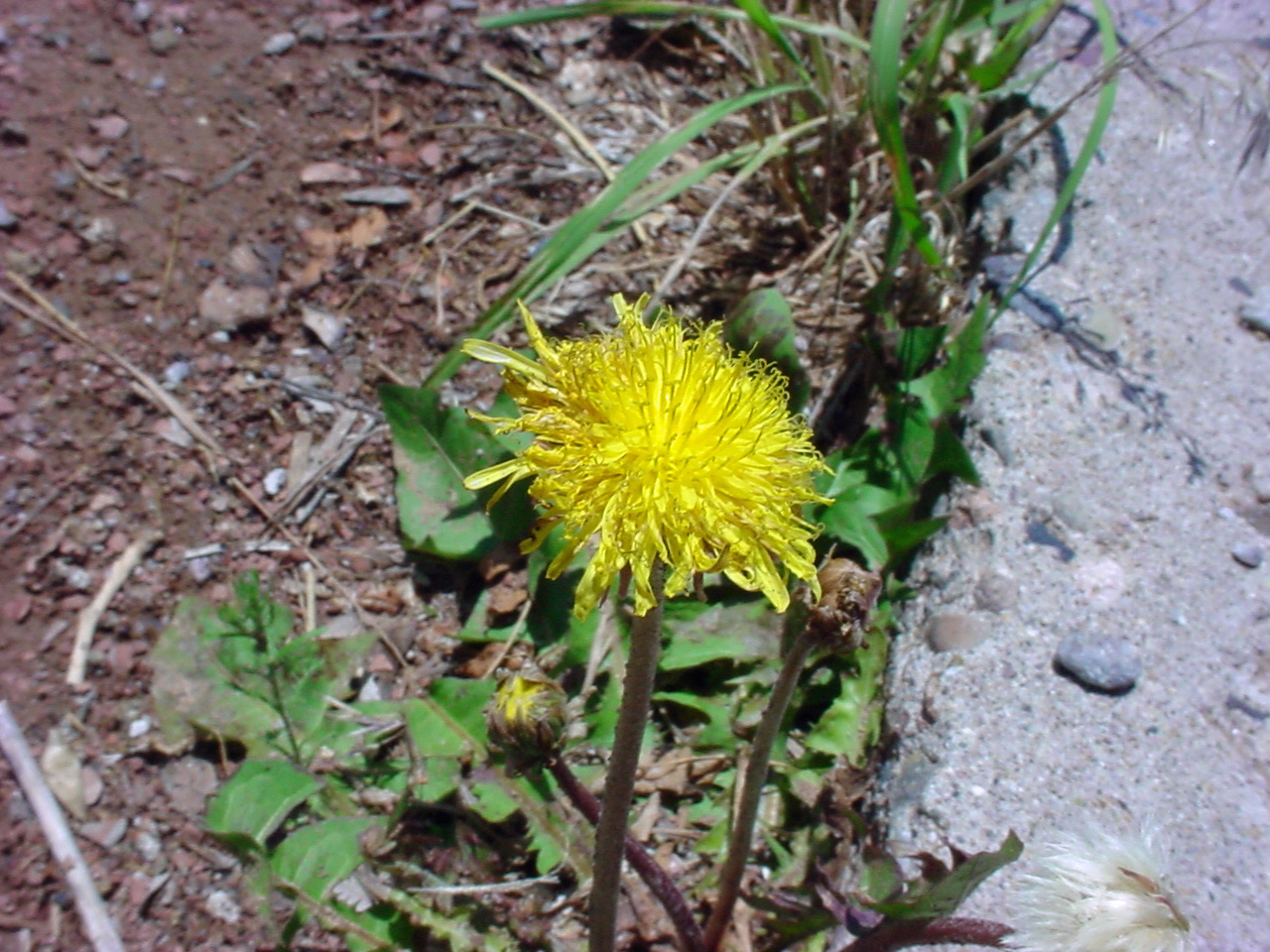Selected Plants of Navajo Rangelands
Dandelion
Bééshyilt’ą́ą’í

Dandelion is a forb 3 to 12 inches tall, with erect stems that contain a bitter, milky-white juice. It has a fleshy, deep taproot. Flowers are yellow, located on the tip of the leafless stem. It becomes a ball of white, silky bristles at maturity. Seeds of dandelion are topped by a parachute of bristles that aid in dispersal. Basal, deeply lobed leaves are 2 to 16 inches long, and form a rosette. Surfaces of leaves can be lightly pubescent.
Dandelion is widespread throughout North America. It most commonly occurs in disturbed areas such as cut-over or burned forests, avalanche areas, overgrazed ranges, and marshy floodplains, but it may also occur on well-managed ranges. It also occurs on highway and railroad rights-of-way, waste places, old fields, pastures, and lawns. It grows at elevations between 500 and 11,000 feet. Dandelion can reproduce vegetatively by sprouting from the caudex after disturbance. It is found on a variety of soils, but is most common in heavy loams and sandy loams.
Dandelions provide fair to good forage for livestock and wildlife, and are readily eaten because they are relatively succulent. Antelope, as well as sage and forest grouse, use it heavily.
Young leaves can be eaten as spring greens. Roots can be ground and used as a coffee substitute, mild laxative, or to treat heartburn. Tea and wine can be made from the flowers. Flowers can be fried in batter and eaten.
*Description courtesy of Utah State University's Range Plants of Utah.



Copyright 2018 New Mexico State University. Individual photographers retain all rights to their images. Partially funded by the Western Sustainable Agriculture Research and Education Program (westernsare.org; 435.797.2257), project EW15-023. Programs and projects supported by Western SARE are equally open to all people. NMSU is an equal opportunity/affirmative action educator and employer.
NMSU does not discriminate on the basis of age, ancestry, color, disability, gender identity, genetic information, national origin, race, religion, retaliation, serious medical condition, sex (including pregnancy), sexual orientation, spousal affiliation or protected veteran status in its programs and activities as required by equal opportunity/affirmative action regulations and laws and university policy and rules. For more information please read the NMSU Notice of Non-discrimination.

